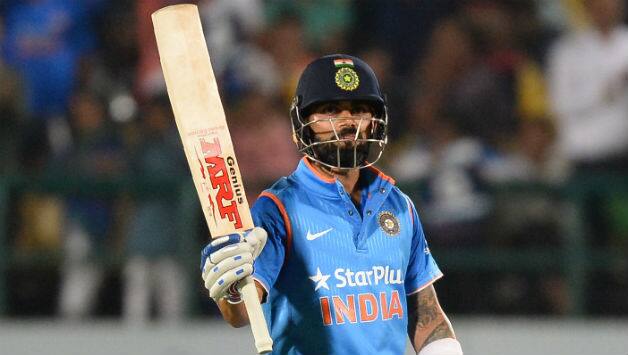
Virat Kohli, in his 200th ODI, sought to play the perfect ODI innings on a slow pitch and in sapping heat. He got lucky when he took the calculated risk, he was also dropped on 29, but that was luck earned as he scored his 31st hundred. New Zealand took more risks collectively, opened with almost a pinch hitter, but enjoyed less luck than Kohli. Yet Kohli was left alone by his team-mates, 37 being the next best score to hid 121, whereas New Zealand batsmen all contributed – Ross Taylor and Tom Latham added 200 – as they chased down 281, only their third win when batting second against India in India.
It was a fascinating contrast of batting approaches. Kohli trusted his game and his fitness to score at around 80 per 100 balls without looking to even hit a boundary. He hit only five boundaries in his first 75 runs, two of them without meaning to. New Zealand, on the other hand, came out attacking, with Colin Munro taking a risk every over. If it was a ploy to put the Indian spinners under pressure even before they were introduced, it didn’t work as they managed to still lose wickets. Latham and Taylor, though, swept the spinners to distraction, managed the seamers with ease, and kept finding the boundary whenever the asking rate threatened to become uncomfortable.
That the run rate was not highly demanding was down largely to Trent Boult, who removed the India openers in his first spell, and then took the wickets in MS Dhoni and Hardik Pandya as he conceded just 35 in his 10 overs. He might have dropped an apparent sitter from Kohli, but Mitchell Santner, perhaps the only relatively permanent specialist fingerspinner in limited-overs cricket today, did his bit with the ball, taking Kedar Jadhav’s wicket and conceding just 41 runs in his allotment of 10 overs.
Kohli had to find a way around these two and slow conditions to build the India inning single-handedly. He stayed at the wicket for 46 overs in Mumbai’s October heat of over 30C and humidity over 70%, but not even once did he miss a cheeky single or fail to put pressure on the deep fielders with the threat of a second run. He came in to bat when the reunited India openers, Shikhar Dhawan and Rohit Sharma, seemed like they had eyes set on the return of the high-scoring ODI in India. Both of them perished to the swing of Boult, and with a shaky idle order to follow, Kohli knew he had to carry the innings.
Kohli did find support from a new middle-order applicant, Dinesh Karthik, who was playing his first ODI in India since 2010, but the support didn’t last. Around the 30th over, when wickets come with bigger impact than the earlier ones, Kane Williamson went back to his strike bowlers. – Cricinfo



